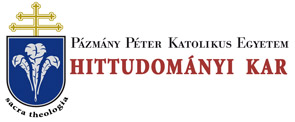Folia Theologica et Canonica 6. 28/20 (2017)
IUS CANONICUM - José Miguel Viejo-Ximénez, Raymond of Penyafort decretalist
120 JOSÉ MIGUEL VIEJO-XIMÉNEZ tic works, according to the most probable chronology, and only rarely mentions the apocryphal and the writings of dubious attribution* 4. The second section selects some aspects of the contribution of Raymond of Penyafort to the universal and particular ius canonicum, and, more generally, to the ius commune, although it only contains a preliminary vision: it is a partial selection of some passages of his work that have earned him admiration and recognition on both sides of the Atlantic5. Eight centuries of Raymundian studies attest the recognition that the Catalan decretalist has enjoyed in very different times and contexts6. It would be however adventorous to conclude that on Raymond of Penyafort one cannot say anything else. The last section suggests some pending issues about the work of most universal Spanish decretalist. Penafort, Raimundo de, in Vaquero, Q. A. - Martinez, T. M. - Gatell, J. V. (dir.), Diccionario de História Eclesiástica de Espana, III. Madrid 1973. 1958-1959. Molano, E., Raimundo de Penafort (Raymundus de Pennaforte) (ca. 1175-1275), in Domingo, R. (dir.), Juristas Universales, I: Juristas antiguos, Madrid-Barcelona 2004. 414-421. Molano, E., Raimundo de Penafort, in Otaduy, J. - Viana, A. - Sedano, J. (dir.), Diccionario General de Derecho Canonico, VI. Pamplona 2012. 690-693. 4 Following dubious works have not been considered: (i) Summa metrica iuris; (ii) Tractatus Fr. Raymundi de vii. viriis capitalibus; and (iii) Tractatus de dispensationibus. Neither the five apocryphals: (i) Summa quando poenitens remitti debeat ad superiorem', (ii) Tractatus de beilo et dueUr, (iii) De ratione visitandae diocesis et curandae subditorum salutisi (iv) Modus iuste negotiandi in gratiam mercatorum', y (v) Libellus pastoralis de cura et officio archidiaconi. On this works cf. Garcia y Garcia, “Valor y proyección histórica”, cit.; cf. García y García, A., Tractatus de dispensationibus. ^ Una nueva obra de San Raimundo de Penafort?, in Aznar Gil, F. R. (coord.), Estudios de derecho matrimonial y procesai en homenaje al Profesor Dr. Juan Luis Acebal Luján, Salamanca 1999. 15-28. 5 Raymond’s teachings have been taken into account by those woho have studied the history off numerous legal institutions: Weigand, R., Die bedingte Eheschliessung im kanonischen Recht I (Münchener Theologische Studien III.; Kan. Abt. 16), München 1963. 400-402. Weigand, R., Die Naturrechtslehre der Legisten und Dekretisten von lrnerius bis Accursius und von Gratian bis Johannes Teutonicus (Münchener Theologische Studien III.; Kan. Abt. 26), München 1967. 256-258. Liotta, F., La continenza dei chierici, Milano 1971.373-387. Müller. H., Der Anteil der Laien an der Bischofswahl: Ein Beitrag zur Geschichte der Kanonistik von Gratian bis Gregor IX. (Kánonistische Studien und Texte 29), Amsterdam 1977. 197-200. Minnucci, G., La capacità processuale della donna nel pensiero canonistico classico, II: Dalle Scuole d’Oltralpe a S. Raimondo di Pennaforte (Studi senesi, Quaderni 79), Milano 1994. 223-227. 6 Bibliography: Mas, L. G., Biobibliografia de San Ramon de Penyafort, in Magister Raimundus: atti del convegno per il IV centenario della canonizzazione di San Raimondo de Penyafort: 1601-2001 (a cura di Longo, C.), Roma 2003. 11-34. Cf. also the Bio-Bibliographical Guide to Medieval and Early Modern Jurists: http://amesfoundation.law.harvard.edu/BioBibCanonists/ Report_Biobib2.php?record_id=a481 (visit: 08.02.18).
